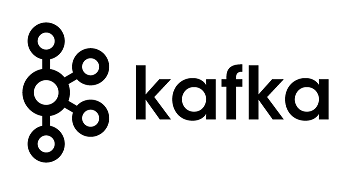快速认识Kafka阶段(1)——最详细的Kafka介绍
教你快速搭建Kafka集群(2)——Kafka集群安装部署Kafka集群的简单操作入门(3)——Kafka集群操作
前面三篇文章给大家分享了kafka的一些理论知识和简单的操作,下面给大家分享Kafka的JavaAPI的操作!!!
先点个赞吧!

1、kafka的JavaAPI操作
1、创建maven工程并添加jar包
创建maven工程并添加以下依赖jar包的坐标到pom.xml
<dependencies>
<!-- https://mvnrepository.com/artifact/org.apache.kafka/kafka-clients -->
<dependency>
<groupId>org.apache.kafka</groupId>
<artifactId>kafka-clients</artifactId>
<version>1.0.0</version>
</dependency>
<dependency>
<groupId>org.apache.kafka</groupId>
<artifactId>kafka-streams</artifactId>
<version>1.0.0</version>
</dependency>
</dependencies>
<build>
<plugins>
<!-- java编译插件 -->
<plugin>
<groupId>org.apache.maven.plugins</groupId>
<artifactId>maven-compiler-plugin</artifactId>
<version>3.2</version>
<configuration>
<source>1.8</source>
<target>1.8</target>
<encoding>UTF-8</encoding>
</configuration>
</plugin>
</plugins>
</build>
2、生产者代码
(1)使用生产者,生产数据
/**
* 订单的生产者代码,
*/
public class OrderProducer {
public static void main(String[] args) throws InterruptedException {
/* 1、连接集群,通过配置文件的方式
* 2、发送数据-topic:order,value
*/
Properties props = new Properties();
//kafka服务器地址
props.put("bootstrap.servers", "node01:9092");
//消息确认机制
props.put("acks", "all");
//重试机制
props.put("retries", 0);
//批量发送的大小
props.put("batch.size", 16384);
//消息延迟
props.put("linger.ms", 1);
//批量的缓冲区大小
props.put("buffer.memory", 33554432);
props.put("key.serializer",
"org.apache.kafka.common.serialization.StringSerializer");
props.put("value.serializer",
"org.apache.kafka.common.serialization.StringSerializer");
KafkaProducer<String, String> kafkaProducer = new KafkaProducer<String, String>
(props);
for (int i = 0; i < 1000; i++) {
// 发送数据 ,需要一个producerRecord对象,最少参数 String topic, V value kafkaProducer.send(new ProducerRecord<String, String>("order", "订单信
息!"+i));
}
kafkaProducer.close();
}
}
(2)kafka当中的数据分区
kafka生产者发送的消息,都是保存在broker当中,我们可以自定义分区规则,决定消息发送到哪个partition里面去进行保存
查看ProducerRecord这个类的源码,就可以看到kafka的各种不同分区策略
kafka当中支持以下四种数据的分区方式:
//第一种分区策略,如果既没有指定分区号,也没有指定数据key,那么就会使用轮询的方式将数据均匀的发送到不同的分区里面去
//ProducerRecord<String, String> producerRecord1 = new ProducerRecord<>("mypartition", "mymessage" + i);
//kafkaProducer.send(producerRecord1);
//第二种分区策略 如果没有指定分区号,指定了数据key,通过key.hashCode % numPartitions来计算数据究竟会保存在哪一个分区里面
//注意:如果数据key,没有变化 key.hashCode % numPartitions = 固定值 所有的数据都会写入到某一个分区里面去
//ProducerRecord<String, String> producerRecord2 = new ProducerRecord<>("mypartition", "mykey", "mymessage" + i);
//kafkaProducer.send(producerRecord2);
//第三种分区策略:如果指定了分区号,那么就会将数据直接写入到对应的分区里面去
// ProducerRecord<String, String> producerRecord3 = new ProducerRecord<>("mypartition", 0, "mykey", "mymessage" + i);
// kafkaProducer.send(producerRecord3);
//第四种分区策略:自定义分区策略。如果不自定义分区规则,那么会将数据使用轮询的方式均匀的发送到各个分区里面去
kafkaProducer.send(new ProducerRecord<String, String>("mypartition","mymessage"+i));
自定义分区策略
public class KafkaCustomPartitioner implements Partitioner {
@Override
public void configure(Map<String, ?> configs) {
}
@Override
public int partition(String topic, Object arg1, byte[] keyBytes, Object arg3, byte[] arg4, Cluster cluster) {
List<PartitionInfo> partitions = cluster.partitionsForTopic(topic);
int partitionNum = partitions.size();
Random random = new Random();
int partition = random.nextInt(partitionNum);
return partition;
}
@Override
public void close() {
}
}
主代码中添加配置
@Test
public void kafkaProducer() throws Exception {
//1、准备配置文件
Properties props = new Properties();
props.put("bootstrap.servers", "node01:9092,node02:9092,node03:9092");
props.put("acks", "all");
props.put("retries", 0);
props.put("batch.size", 16384);
props.put("linger.ms", 1);
props.put("buffer.memory", 33554432);
props.put("partitioner.class", "cn.itcast.kafka.partitioner.KafkaCustomPartitioner");
props.put("key.serializer", "org.apache.kafka.common.serialization.StringSerializer");
props.put("value.serializer", "org.apache.kafka.common.serialization.StringSerializer");
//2、创建KafkaProducer
KafkaProducer<String, String> kafkaProducer = new KafkaProducer<String, String>(props);
for (int i=0;i<100;i++){
//3、发送数据
kafkaProducer.send(new ProducerRecord<String, String>("testpart","0","value"+i));
}
kafkaProducer.close();
}
3、消费者代码
消费必要条件
消费者要从kafka Cluster进行消费数据,必要条件有以下四个
#1、地址
bootstrap.servers=node01:9092
#2、序列化
key.serializer=org.apache.kafka.common.serialization.StringSerializer value.serializer=org.apache.kafka.common.serialization.StringSerializer
#3、主题(topic) 需要制定具体的某个topic(order)即可。
#4、消费者组 group.id=test
(1)自动提交offset
消费完成之后,自动提交offset
/**
* 消费订单数据--- javaben.tojson
*/
public class OrderConsumer {
public static void main(String[] args) {
// 1\连接集群
Properties props = new Properties();
//指定kafka服务器
props.put("bootstrap.servers", "hadoop-01:9092");
//消费组
props.put("group.id", "test");
//以下两行代码 ---消费者自动提交offset值
props.put("enable.auto.commit", "true");
//自动提交的周期
props.put("auto.commit.interval.ms", "1000");
props.put("key.deserializer", "org.apache.kafka.common.serialization.StringDeserializer");
props.put("value.deserializer", "org.apache.kafka.common.serialization.StringDeserializer");
KafkaConsumer<String, String> kafkaConsumer = new KafkaConsumer<String, String>
(props);
// 2、发送数据 发送数据需要,订阅下要消费的topic。 order kafkaConsumer.subscribe(Arrays.asList("order"));
while (true) {
ConsumerRecords<String, String> consumerRecords = kafkaConsumer.poll(100);// jdk queue offer插入、poll获取元素。 blockingqueue put插入原生, take获取元素
for (ConsumerRecord<String, String> record : consumerRecords) { System.out.println("消费的数据为:" + record.value());
}
}
}
}
(2)手动提交offset
如果Consumer在获取数据后,需要加入处理,数据完毕后才确认offset,需要程序来控制offset的确认? 关闭自动提交确认选项
props.put("enable.auto.commit", "false");
手动提交ofset值
kafkaConsumer.commitSync();
完整代码如下所示:
Properties props = new Properties();
props.put("bootstrap.servers", "localhost:9092");
props.put("group.id", "test");
//关闭自动提交确认选项
props.put("enable.auto.commit", "false");
props.put("key.deserializer",
"org.apache.kafka.common.serialization.StringDeserializer");
props.put("value.deserializer",
"org.apache.kafka.common.serialization.StringDeserializer");
KafkaConsumer<String, String> consumer = new KafkaConsumer<>(props); consumer.subscribe(Arrays.asList("test"));
final int minBatchSize = 200;
List<ConsumerRecord<String, String>> buffer = new ArrayList<>();
while (true) {
ConsumerRecords<String, String> records = consumer.poll(100);
for (ConsumerRecord<String, String> record : records) {
buffer.add(record);
}
if (buffer.size() >= minBatchSize) {
insertIntoDb(buffer);
// 手动提交offset值
consumer.commitSync();
buffer.clear();
}
}
(3)消费完每个分区之后手动提交offset
上面的示例使用commitSync将所有已接收的记录标记为已提交。 在某些情况下,您可能希望通过明确指定偏移量 来更好地控制已提交的记录。 在下面的示例中,我们在完成处理每个分区中的记录后提交偏移量。
try {
while(running) {
ConsumerRecords<String, String> records = consumer.poll(Long.MAX_VALUE);
for (TopicPartition partition : records.partitions()) {
List<ConsumerRecord<String, String>> partitionRecords = records.records(partition);
for (ConsumerRecord<String, String> record : partitionRecords) { System.out.println(record.offset() + ": " + record.value());
}
long lastOffset = partitionRecords.get(partitionRecords.size() -1).offset();
consumer.commitSync(Collections.singletonMap(partition, new OffsetAndMetadata(lastOffset + 1)));
}
}
} finally { consumer.close();}
(4)指定分区数据进行消费
1、如果进程正在维护与该分区关联的某种本地状态(如本地磁盘上的键值存储),那么它应该只获取它在磁盘上 维护的分区的记录。
2、如果进程本身具有高可用性,并且如果失败则将重新启动(可能使用YARN,Mesos或AWS工具等集群管理框 架,或作为流处理框架的一部分)。 在这种情况下,Kafka不需要检测故障并重新分配分区,因为消耗过程将在另 一台机器上重新启动。
Properties props = new Properties(); props.put("bootstrap.servers", "localhost:9092"); props.put("group.id", "test");
props.put("enable.auto.commit", "true");
props.put("auto.commit.interval.ms", "1000");
props.put("key.deserializer",
"org.apache.kafka.common.serialization.StringDeserializer");
props.put("value.deserializer",
"org.apache.kafka.common.serialization.StringDeserializer");
KafkaConsumer<String, String> consumer = new KafkaConsumer<>(props);
//consumer.subscribe(Arrays.asList("foo", "bar"));
//手动指定消费指定分区的数据---start
String topic = "foo";
TopicPartition partition0 = new TopicPartition(topic, 0);
TopicPartition partition1 = new TopicPartition(topic, 1); consumer.assign(Arrays.asList(partition0, partition1));
//手动指定消费指定分区的数据---end
while (true) {
ConsumerRecords<String, String> records = consumer.poll(100);
for (ConsumerRecord<String, String> record : records)
System.out.printf("offset = %d, key = %s, value = %s%n", record.offset(), record.key(), record.value());
}
注意事项:
1、要使用此模式,您只需使用要使用的分区的完整列表调用assign(Collection),而不是使用subscribe订阅 主题。
2、主题与分区订阅只能二选一
(5)重复消费与数据丢失
说明:
1、已经消费的数据对于kafka来说,会将消费组里面的offset值进行修改,那什么时候进行修改了?是在数据消费 完成之后,比如在控制台打印完后自动提交;
2、提交过程:是通过kafka将offset进行移动到下个message所处的offset的位置。
3、拿到数据后,存储到hbase中或者mysql中,如果hbase或者mysql在这个时候连接不上,就会抛出异常,如果在处理数据的时候已经进行了提交,那么kafka伤的offset值已经进行了修改了,但是hbase或者mysql中没有数据,这个时候就会出现数据丢失。
4、什么时候提交offset值?在Consumer将数据处理完成之后,再来进行offset的修改提交。默认情况下offset是 自动提交,需要修改为手动提交offset值。
5、如果在处理代码中正常处理了,但是在提交offset请求的时候,没有连接到kafka或者出现了故障,那么该次修 改offset的请求是失败的,那么下次在进行读取同一个分区中的数据时,会从已经处理掉的offset值再进行处理一 次,那么在hbase中或者mysql中就会产生两条一样的数据,也就是数据重复
